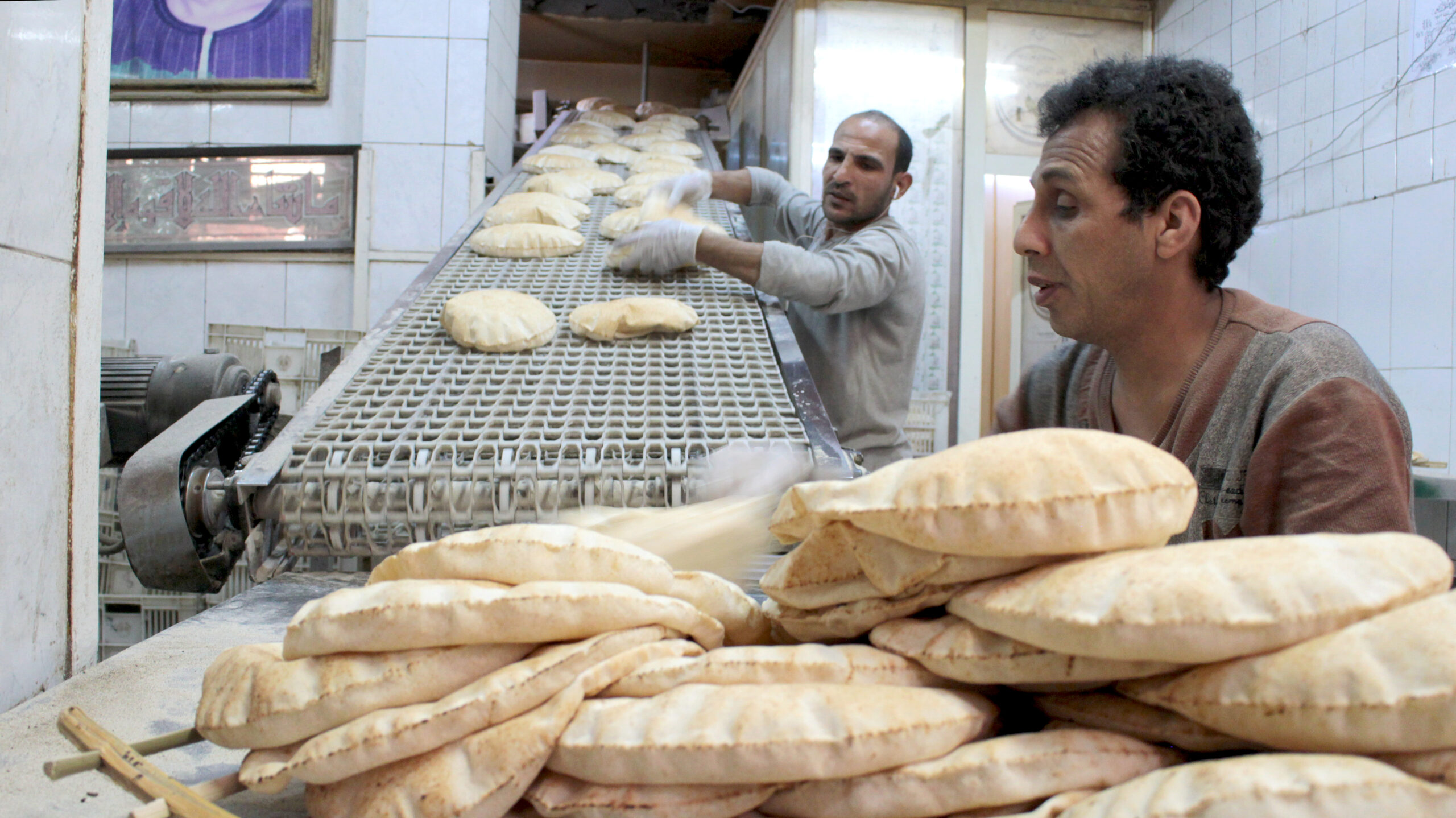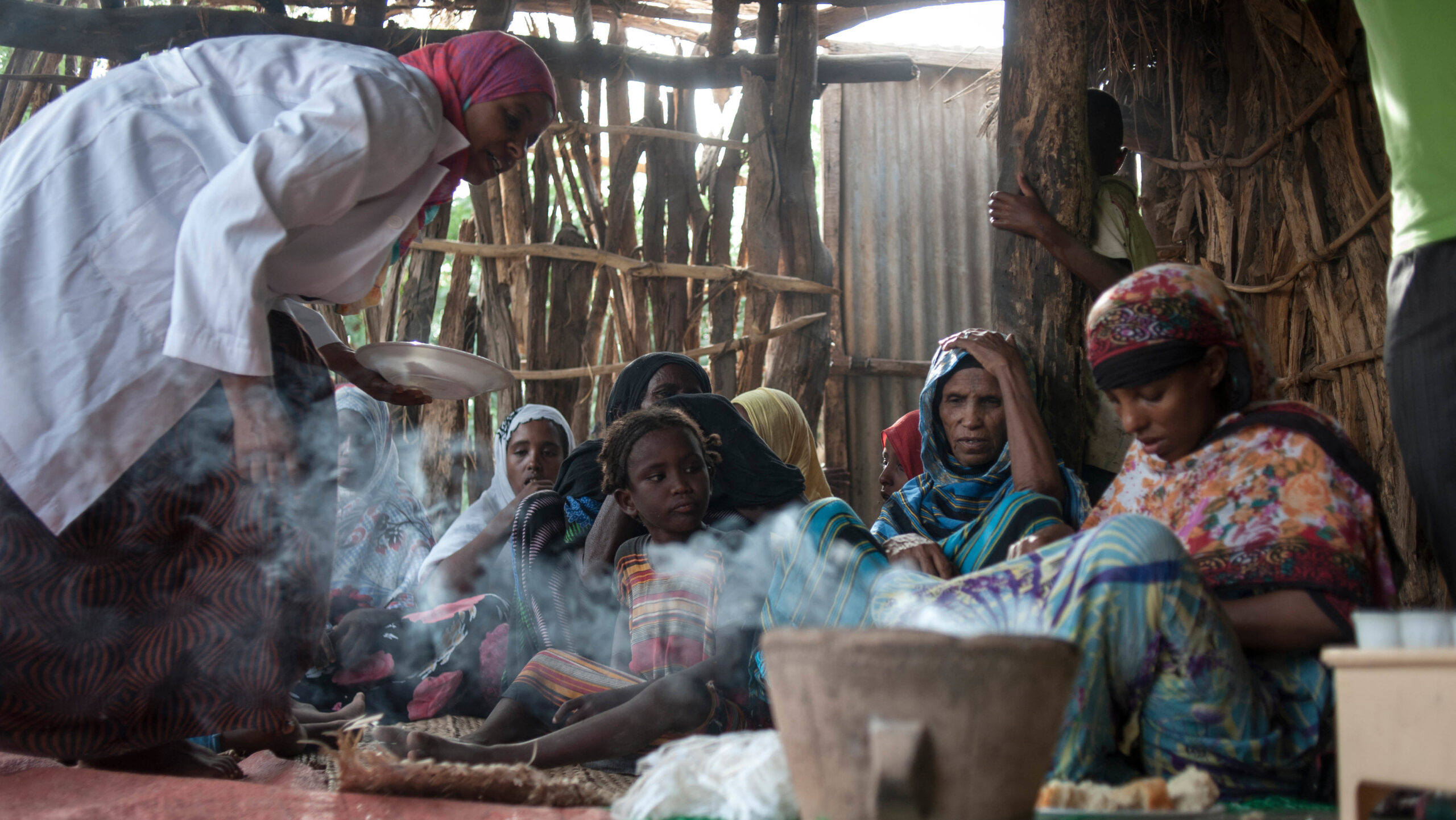In June 2024, the Egyptian government raised the price of subsidized traditional baladi bread to 20 piastres ($0.004)1 per loaf—quadrupling the old price of 5 piastres. The change—the first such increase since 1989—was triggered by a number of factors: Egypt’s heavy reliance on wheat imports due to limited arable crop base and growing population, along with high global wheat prices amid the Russia-Ukraine war, combined with the weakening of Egyptian pound (EGP) against the U.S. dollar in March 2024 and government efforts to reduce public spending.
Bread prices have long been a sensitive political issue in Egypt. In 1977, President Anwar Sadat cut the subsidies, triggering protests known as the “bread intifada”—ultimately forcing him to roll back his subsidy reform. In 2011, Egyptians took to the streets protesting the regime of President Hosni Mubarak with slogans calling for “bread, freedom, and social justice.” In 2017, Egyptian Ministry of Supply proposals to reduce the state-sponsored provision of bread from up to 4,000 to 500 loaves per bakery provoked large-scale protests across the country.
High consumption of baladi bread makes wheat an essential crop for the Egyptian diet, as in most countries in the Middle East and North Africa. While Egyptian per capita wheat consumption has declined in recent years (Figure 1), it still accounts for about 35% of total daily calories. This blog post examines how the Egyptian food subsidy program has been affected by changes in wheat imports due to the Russia-Ukraine war and persistently high domestic wheat prices due to the weakening of the Egyptian pound.
Figure 1
The impact of the Russia-Ukraine war on Egyptian wheat purchases
As wheat exports from Russia and Ukraine grew over the 2010s, Egypt became increasingly reliant on them; by 2022, the two countries accounted for about 75% of all wheat imports. The war, which began in February 2022, disrupted Ukraine’s ability to ship grain from its Black Sea ports and, in the first few months, also affected Russian shipments. Yet the incipient global wheat supply crisis proved transient, as both countries later got exports flowing and global markets provided alternative sources. Thus Egypt was able to maintain import volumes after an initial drop.
Egypt initially responded by purchasing from other suppliers, primarily Romania and France (Figure 2), but by the end of 2022 Russian exports had regained their previous pace (bolstered in part by a very large Russian wheat crop and low prices). The Black Sea Grain Initiative put in place at the end of July 2022 allowed Ukraine to resume shipments from the ports around Odesa, though the country’s share of Egyptian wheat imports fell significantly from the more than 30% of the market it held in 2021.
Figure 2
Despite the challenges of sourcing wheat during the early stages of the war, Egypt wheat imports totaled 10 million metric tons (MT) in 2022, roughly the same quantity imported the previous year. Russia’s market share of total imports was almost 54% in 2022, while Ukraine’s share fell to less than 7%. Imports in 2023 totaled 8.7 million MT, with Russia and Ukraine accounting for 75% and 13%, respectively. In the first three months of 2024 (the most recently reported data), Egypt reported wheat imports of 3.4 million MT, with Russia and Ukraine together accounting for 92%. Ukraine's share over the period rose to its highest level since before the war began.
High domestic wheat prices
While Egypt has maintained a steady supply of wheat imports, current problems stem from high import costs owing to the weak EGP—even as global prices have dropped.
World wheat prices rose more than 40% in the months following the start of the war (Figure 3), yet wheat prices expressed in EGP rose even more (as high as 60% above January 2022 levels by May 2022). Wheat prices in EGP then started to decline as global prices fell—however, this drop was short-lived; prices in local currencies then rose as the EGP weakened relative to the USD. By June 2024, international wheat prices were trading more than 20% below January 2022 levels, while wheat prices in EGP remained 65% above January 2022 levels.
Figure 3
The high local price of wheat due to the strength of USD relative to EGP means the Egyptian government must pay more to import wheat—a problem that contributed to its decision to raise the price of subsidized baladi bread.
Egypt’s baladi program
The Egyptian food subsidy program Tamween consists of two main components (Breisinger et al., 2023). First, smart ration cards allow beneficiaries to access subsidized commodities2 from Tamween shops in the value of up to EGP 50 per beneficiary per month. Second, a bread allowance of five baladi bread loaves per beneficiary per day at the subsidized price, for a maximum of four beneficiaries per household, can be claimed using smart card. Any unused baladi bread allowance can be converted to points on the smart card at the rate of 1 piastre = 0.5 points (i.e., one baladi bread = 10 points) and redeemed for other subsidized commodities. The price increase of baladi bread did not affect food subsidy program operations and the rate at which unused baladi bread allowance is converted to smart card points.
Bread is one of the main staples in Egypt, and 73 million people (about 65% of the population) benefited from the baladi bread subsidy program in 2023. The new price of subsidized bread of EGP 0.20 is still much less than the current market price of EGP 1-23, but it allowed the government to reduce its share of the cost of subsidizing baladi bread production from 96% to 84%.
The price increase of subsidized baladi bread was the latest in a series of government actions, following reductions in loaf size4 and inclusion of maize flour to the recipe in efforts to limit ever-increasing costs of production. Nevertheless, those rising costs required the government to allocate around EGP 91 billion ($1.85 billion) for baladi bread subsidies in its budget for the 2024/25 fiscal year (around 14% of the total budget for subsidy credits, grants, and social benefits), EGP 7 billion ($140 million) or 8.3% more than the previous year (MOF, 2023; MOF, 2024).
Egypt’s food subsidies used to be considered an essential means of support for poor families during economic shocks such as currency devaluation and rising food prices. However, previous IFPRI research has found that the subsidies had an unintended consequence, making it easier for recipients to afford an unbalanced, low-diversity diet that did not provide sufficient essential micronutrients—thus contributing to malnutrition among children and mothers in beneficiary households (Ecker et al., 2016). The subsidies create perverse incentives, in other words: Consumers are more inclined to purchase rationed, unhealthy, and calorie dense foods at far below market prices than more nutritious unsubsidized foods sold at relatively higher prices.
Egypt’s ongoing economic crisis will make such behavior even more prevalent. The recent increase the price of subsidized bread, coupled with the current inflation rate of 29%, significantly increases the cost of the food basket—further eroding household food and nutrition security. As the market prices of unsubsidized food commodities increase, households will face losses in real income that will push them to consume calorie dense subsidized foods with unaffected prices. Moreover, boosting the price of subsidized baladi bread increased the value of unused baladi bread allowance, which could potentially encourage beneficiaries to substitute bread with other subsidized commodities.
Policy implications
Overall, these economic pressures suggest we will see consumption patterns of both subsidized and unsubsidized foods changing in the coming period—and we do not expect that poor families will be able to shift to more nutritious and better-balanced diets under the current food subsidy system. As a first step to improving the nutrition security of Egypt’s poor households, the government could consider expanding its subsidized food basket to include micronutrient-rich foods, especially fresh fruits, vegetables, and meat. Furthermore, incorporating cash allowances would give beneficiaries flexibility to select food commodities that best suit their consumption needs. Both these approaches should be accompanied with campaigns to increase awareness and knowledge about the importance of nutritious and diverse diets.
Nina Jovanovic is an Associate Research Fellow with IFPRI's Development Strategies and Governance Unit, based in Cairo; Joseph Glauber is a Senior Research Fellow with IFPRI's Markets, Trade, and Institutions Unit. Opinions are the authors'.
This work is part of the CGIAR Research Initiative on National Policies and Strategies (NPS).
- 1 EGP = 100 piastres; 1 EGP = 0.02 USD. ↩︎
- Subsidized food commodities include sugar, oil, chicken stock, pasta, rice, lentils, beans, flour, artificial ghee, tea, tomato paste, shredded tuna, jam, ultra-processed and fresh cheese, powdered milk, vinegar, salt, halva, four types of biscuits, tahini, coffee. ↩︎
- Current market price of baladi bread ranges between EGP 1 and EGP 2, depending on the size and quality of the loaf, and the neighborhood of the bakery. ↩︎
- Original subsidized loaf weighted 168 grams before 1984 whereas today it weighs only 80 grams as a result of quiet reform processes (Akhter et al., 2001). ↩︎







